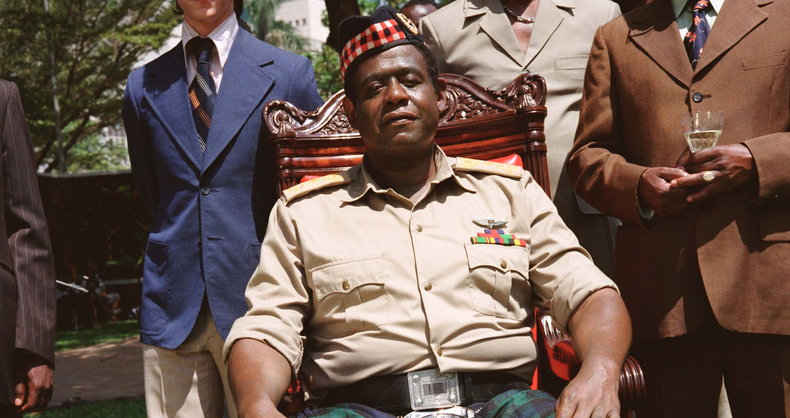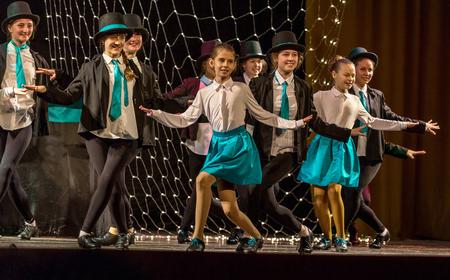
Method acting—or the Method—is one of the most iconic and mysterious acting techniques in the world. It is also one of the most controversial.
The origins of the Method connect a lot of important names from theater history, such as Konstantin Stanislavsky and Stella Adler. In the United States, however, most sources trace Method acting to Lee Strasberg. The fact that the Lee Strasberg Theatre & Film Institute trademarked the phrase The Method™ could be one reason. But there’s more to know about Method acting than who owns the trademark.
Let’s dispel some of the confusion by taking a deeper look at the Method, the teachers who developed it, and the actors who rely on it today.
JUMP TO

“Taxi Driver” Courtesy Columbia Pictures
Method acting trains actors to inhabit the psyche of their character, sometimes for long periods, to facilitate realistic behavior under imaginary circumstances.
Some key Method acting techniques include:
- Removing tension: Strasberg believed that actors need to be a blank slate before they could embody the life of another person. To do this, actors must understand where they store tension in their bodies and release it before creating a character.
- Focus and deliberateness: Once they release tension, actors are encouraged to absorb the world differently—honing in on specific sounds, for example, or filtering others out. A hyper-attention to the senses is necessary for actors to replicate believable stimuli in their work. The same sorts of exercises are done with vision, touch, and even taste.
- Using sense memory: Once the senses are attuned, actors move into sense memory, the Method’s version of Stanislavsky’s affective memory. This is a process in which an actor draws on the memories of personal experiences to create a genuine response during a performance. Sense memory is the most controversial component of the Method.
- Identification and replication: The ability to identify sensations and replicate them prompts an authentic response that gives the actor artistic autonomy. Rather than be a puppet, Strasberg believed, the skilled Method actor influences the work’s very nature as much as the writer or director.
The emphasis on identifying and replicating detailed stimuli is one part of Method acting that sometimes gets out of hand. In the pursuit of detailed stimuli, some Method actors choose to immerse themselves in their character’s environment, like Robert De Niro working as a cabbie in preparation for his iconic role in “Taxi Driver.”

Zephyr_p/Shutterstock
Though sometimes attributed to Konstantin Stanislavsky, The Method as we know it today was developed by Lee Strasberg, a Polish-American actor, director, and acting teacher. Strasberg was born in Austrian Poland in 1901 and emigrated to the U.S. when he was seven years old. He grew up on New York’s Lower East Side, where his first theatrical experiences were acting in Yiddish plays as a child.
As a young man, Strasberg studied acting at the Christie Street Settlement House and later with the Theatre Guild. In 1931, Strasberg co-founded the iconic Group Theatre with Harold Clurman and Cheryl Crawford. The Group Theatre quickly gained recognition for its natural acting style and the experimental plays it produced. Strasberg left the Group in 1937 and spent the late 1930s and 1940s in various roles across the industry, from acting instructor to Broadway director. He also briefly lived in Hollywood, where he taught acting and directed short films.
In 1948, Strasberg’s old friend Crawford invited him to join the Actors Studio, which she had co-founded alongside Elia Kazan and Robert Lewis. Strasberg joined as a teacher and ultimately became the director in 1951. At the Actors Studio, Strasberg taught a generation of actors that later became American film icons. This role as director of the Actors Studio began to cement Strasberg’s legacy as the father of Method acting.
In 1969, he founded the Lee Strasberg Theatre & Film Institute, which currently has studios in Los Angeles and New York City. Later in life, Strasberg appeared in a few films, including 1974’s “The Godfather Part II.” Strasberg died in 1982. Five years later, his autobiographical book about the development of Method acting was published.
How Konstantin Stanislavsky influenced Method acting
Before he co-founded the Group Theatre, Lee Strasberg studied Stanislavsky’s System with two former Stanislavsky students, Maria Ouspenskaya and Richard Boleslawski. Once Strasberg learned the System, he quickly began teaching and modifying it to create his Method.
Strasberg’s Method developed primarily around Stanislavsky’s idea of “affective memory.” Affective memory encourages actors to use their remembered emotions to connect with the circumstances of a character. Later in his career, Stanislavsky abandoned affective memory, feeling it produced inconsistent results. But by the time his books were published in English, American acting teachers had enthusiastically spread his early techniques across the U.S. Even among American acting teachers who embraced early Stanislavsky, Strasberg’s obsession with affective memory made him—and his Method—controversial.

“The Last King of Scotland” Courtesy Fox Searchlight Pictures
One of the most frequently cited examples of Method acting is Marlon Brando’s performance in 1954’s “On the Waterfront”—in particular, the scene where he retrieves Eva Marie Saint’s dropped glove and tries it on his own rough hand as they stroll through a park.
Other famous Method acting performances include:
- Robert De Niro in “Raging Bull”
- Daniel Day-Lewis in “My Left Foot”
- Forest Whitaker in “The Last King of Scotland”
- Charlize Theron in “Monster”
Today, when most American actors think about Method acting examples, they think about the immersive techniques that actors like Day-Lewis and Jared Leto use to prepare for roles. Some acting scholars argue that this immersive strategy is not truly Method. Leto himself isn’t sure the term Method acting applies to his work, either. What’s important to remember is this: Mailing your costars a dead pig is not an example of Method acting.
 10 Actors Who Studied Strasberg
10 Actors Who Studied Strasberg 
“Boys Don't Cry” Courtesy Fox Searchlight Pictures
Method acting exercises fall into three major categories: relaxation, sensory, and emotional exercises. Releasing tension was one of Strasberg’s primary goals. Relaxation was so crucial to Strasberg that he devoted the first two hours of his four-hour classes to relaxation and sense memory exercises.
Some typical Method acting exercises include:
- Relaxation: The typical relaxation exercise asks actors to move every body part from their fingers to their facial muscles in small circles. With each movement, actors identify tension and release it. Actors are encouraged to make “ahh” sounds when necessary to release emotional tension that may arise.
- Sense memory: Sense memory exercises encourage actors to use all five senses to recall physical sensations from their memory. Sense memory exercises are designed to train actors’ focus on stimulating feelings to create rich responses on a stage or set. Actors may be asked to recall their childhood bedroom or the sensation of a specific, sharp pain.
- A private moment: In this exercise, actors perform an activity onstage that they typically do in private. The chosen activity should be so private that they would stop if another person walked into the room—for instance, examining your pores in a magnifying mirror or doing an embarrassing dance. Strasberg also encouraged actors to identify the sensations and textures of important personal objects to see how they handled and treated them.
- Animal exercise: Another exercise Strasberg would do was to have his students move and behave like animals or speak in gibberish to shake societal patterns and habits out of their system.
- The song and dance: The song and dance exercise tries to get actors out of their habitual patterns and into a state of genuine, unpredictable expression. Actors are asked to sing a familiar song one syllable at a time, accompanying each syllable with unique, unpredictable, and unprepared movements.

“Beau is Afraid” Courtesy A24
- Pros of Method acting: One upside of Method techniques is the way they allow actors to disappear into their roles. Method acting also helps actors create nuanced, unexpected performances that can be exhilarating to watch—something that is particularly important for film and television, due to the intimacy and detail offered by camera close-ups. With directors and cinematographers guiding the audience’s eye toward the nuances of an actor’s performance, the effects of emotional recall register more clearly. Strasberg himself recognized the power his technique had on camera.
- Cons of Method acting: But there are also downsides to using the Method. For one, great Method performances require well-written roles. If your character is underdeveloped with little pathos to unpack, Method techniques can leave you essentially playing yourself. Because Strasberg’s techniques encourage lots of inner reflection, Method actors can sometimes gain a reputation for being demanding, aloof, or difficult. Many directors also dislike the Method, feeling that it undermines their control of a play or film.

Juan Gordillo/Shutterstock
Classes
- Lee Strasberg Theatre & Film Institute: “The only acting school in the world that teaches Lee Strasberg’s work in its consummate form,” the Institute has classes in NYC, L.A., and online.
- StandBy Method Acting School: StandBy works with Method actors in Sheffield, London, and online.
- Theatre Group Studio: This members-only workshop trains students in Method acting techniques.
Books
If you want to get a head start on Strasberg’s teachings, you can prepare by reading his book “A Dream of Passion: The Development of the Method.”
These books written by former students are also a great place to start:
- "Strasberg’s Method as Taught by Lorrie Hull" by Lorrie Hull
- "The Lee Strasberg Notes" by Lola Cohen
- "The Method Acting Exercises Handbook" by Lola Cohen

“Monster” Courtesy Newmarket Films
When actors incorporate Method acting techniques into their work, they often notice their performances becoming more internalized and surprising.
- Audiences will see you think. Using the Method strengthens your ability to internalize a character’s thought processes. This allows an audience to witness a character’s decisions and realizations from moment to moment.
- Your performances will gain focus. When you have refined your ability to make deliberate choices, you can find meaning in every word your character speaks.
- Your character work will be more imaginative. Using your sense memories expands your choices beyond the confines of the script. Integrating your own life experiences, perceptions, affinities, inclinations, instincts, and fears brings fresh layers to your character’s inner life.

“Dog Day Afternoon” Courtesy Warner Bros.
- Method acting vs. natural acting: Natural acting is when an actor tries to portray a character as if they were a real person—but doesn't live as the character would.
- Method acting vs. technical acting: Technical actors take on roles by using their knowledge of the formal aspects of acting, which takes less emotional investment than Method acting.
- Method acting vs. character acting: Character actors engage in rigorous script analysis and physical and behavioral changes to put themselves in their character’s shoes, rather than putting themselves in the fictional world.
- Method acting vs. classical acting: Classical acting is about sticking precisely to the script—none of the improvisation or personal choices that inform the Method.
- Method acting vs. Meisner technique: The Meisner technique asks actors to consider their acting partners, which Method acting tends to be more individualistic.
- Method acting vs. Stanislavsky technique: While Method acting is informed by Stanislavsky’s technique, he recommended more of a balance between external and internal preparation.

“Black Swan” Courtesy Fox Searchlight Pictures
One of the most significant risks Method acting can present is obsessive internalization. Without balance, Method performances can become self-absorbed and indulgent; moreover, the Method may make it difficult to compartmentalize the difficult emotions of a character. For that reason, the acting techniques that best complement the Method are probably the ones that counteract it.
To counterbalance the Method’s mental work, do some physical training in the Brechtian style. Explore the Viewpoints technique, the Suzuki Method, Grotowski training, or commedia dell’arte workshops. These are sweaty, athletic actor training protocols that will be just as valuable to you as the Method. They’ll complement your Method training by exercising different parts of your instrument and give you new experiences to use in future work.
Check out Backstage’s film audition listings!



















